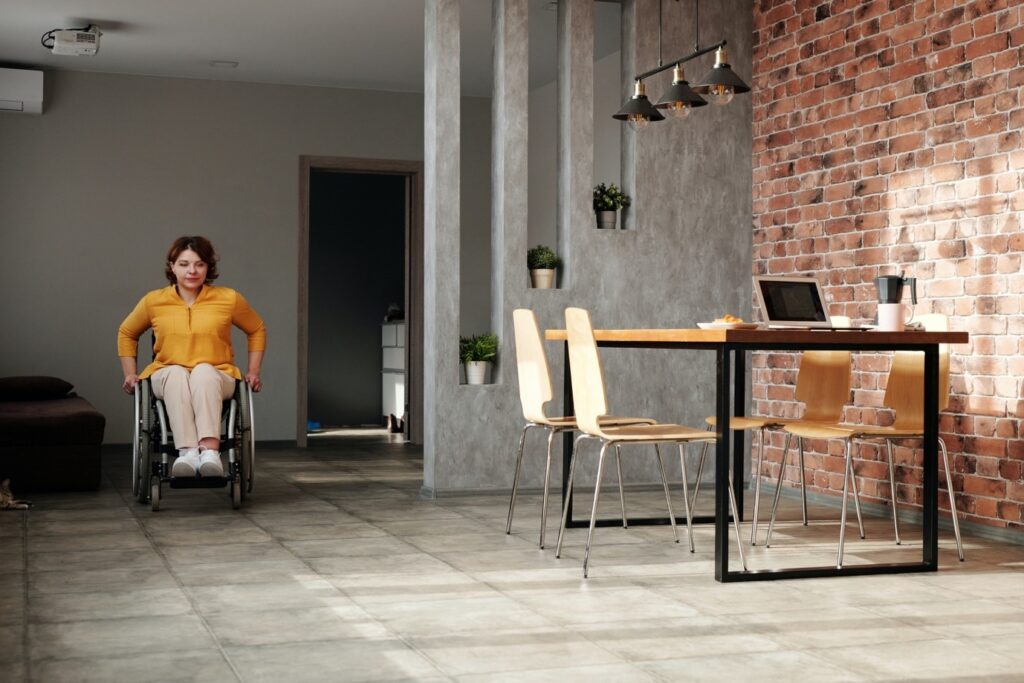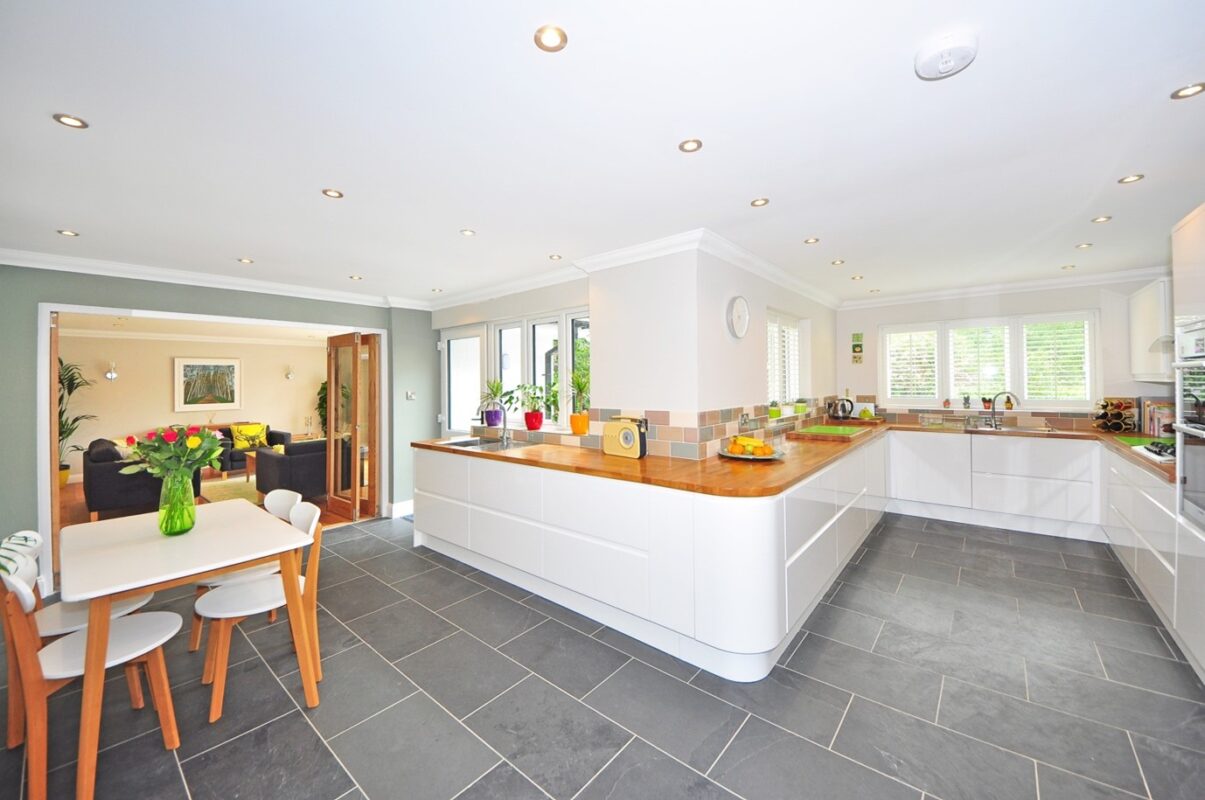10 Top Tips for Landlords on Making Your Property More Accessible

When you’re renting out a property, making it accessible for tenants with disabilities is an important factor. That said, not many homes fit the bill, so here’s how they can…
With over 13.9 million individuals in the UK living with varying degrees of disability, including 1.2 million wheelchair users, landlords can’t afford not to make their properties more accessible.
It’s also against the law for a landlord to discriminate against a disabled tenant, i.e. refusing to rent to them based on their disability. So, you want to be ready in case you receive a tenancy application from a disabled person.
You can speak to your online property solicitor about purchasing homes that are already adapted with accessible features. That said, many houses aren’t equipped, so you can adapt them further down the line when you get a disabled tenant. Alternatively, follow the 10 tips in this post to make your property more accessible right now…
Are You Legally Obliged to Make Your Property More Accessible?
Before we get into the tips for making your property more accessible, we’re going to briefly cover whether you’re legally obliged to do so.
The Disability Discrimination Act forbids the discrimination of tenants and prospective tenants based on their disability. For example, as a landlord it is illegal to:
- Refuse to rent to a disabled person because of their disability.
- Refuse to allow a guide dog or assistance dog.
- Charge higher rent or deposit to disabled tenants.
- Refuse access to additional facilities that other tenants have access to (e.g. laundry room).
- Evict a tenant due to their disability.
The landlord doesn’t have to install modifications that help wheelchair users and other disabled people. However, they do have to allow the tenant to make those alterations at their own expense.
A landlord can choose to do this off their own back, and make the property more accessible in a bid to help disabled people find properties to rent or to avoid having them make alterations further down the line.
How Can You Make Your Property More Accessible to Disabled People?
Now that we have an idea of where you stand legally when it comes to altering your property, it’s time to look at how you can make it more accessible. Here are some tips:
1. Build a ramp
Not all properties have steps but, if yours does, you’ll need to build a ramp to give wheelchair users the ability to enter the property.
Ramps are typically made from poured concrete, wood, or aluminium, and add significant value to the property compared to the upfront cost of installing one. Ramps are also useful for anyone moving into the property, as it makes moving furniture a lot easier.
2. Widen the doors

Just as important as building ramps is widening the doors throughout your property. The only way wheelchair users are going to be able to move through the property freely is if the doors are wide enough for their wheelchair to fit through.
The standard width of the doorways should be at least 90cm. This can often be achieved by replacing the bulky doorframe with something sleeker, or by switching from a hinged system to a swing away.
3. Install chair lifts and railings
If you’re renting out a property with more than one storey, you’re going to need chair lifts and railings to help the disabled tenant make it up the stairs. For now, you’re probably better off installing the railings, as that will be enough for a lot of disabled tenants.
Chair lifts can always be installed at a later date if the tenant is unable to make it up the stairs with the railings alone, and have requested permission to have one installed.
4. Fit accessible kitchen and bathroom facilities
Making your property accessible to wheelchair users means lowering kitchen and bathroom facilities so they’re available at chair height. Bathrooms might also need a wet room and accessible toilets.
Before you go ahead and make all of these adjustments to your property, you have to consider who your target market is. If you’re planning on renting the property to anyone, then make sure your alterations don’t make it less accessible to the average tenant.
5. Relocate plugs and fixtures

You can also make your property more accessible by installing plugs and light fixtures at chair level, so tenants in wheelchairs can access them easily.
6. Provide unrestricted parking
Some disabled tenants will need access to a parking space that is easily accessible from the property. You can get in touch with your local authority if the parking space you have isn’t accessible enough, and see what you can do about changing it.
7. Offer documents in braille
Tenants who have impaired vision might need documents produced in braille. This isn’t an alteration you need to make to your property, but will definitely make your property more accessible to visually impaired people looking for tenancy.
This is as simple as having the number of a printing house who produce documents in braille in your phone who you can call on if this situation ever arises.
8. Make communal areas accessible
If your property has a communal area that’s meant to be used by your tenants, it’s the landlord’s legal obligation to make them accessible to disabled tenants. This could include laundry rooms, gardens and entry hallways.
9. Provide ground floor level access
Some disabled tenants will need access to a bathroom, bedroom and kitchen on the ground level, even if they’re living in a multi-level property. In the event that this person can’t guarantee to make it up the stairs everyday, these facilities should be on the ground floor.
10. Invest in smart technology

Smart technology is one of the newest and most effective ways to make a property more accessible to the disabled. Integrated smart home technology, such as Amazon Alexa and Google Home, make it a lot easier for disabled people to control what’s going on in their home.
Will These Tips Make Your Rental Property More Accessible?
In this post, we’ve shared our top 10 tips on making your property more accessible to tenants with disabilities as a landlord.
There are lots of other tips out there to help you achieve your goal. But, if you get these basics in your property for now, you’ll stand in good stead when it comes to taking on a disabled tenant.
Photo credits:
Woman in wheelchair – Photo by Marcus Aurelius from Pexels
Kitchen interior with wide doors – Creative commons
Light switch – Photo by Castorly Stock from Pexels
Alexa – Photo by Lazar Gugleta on Unsplash


